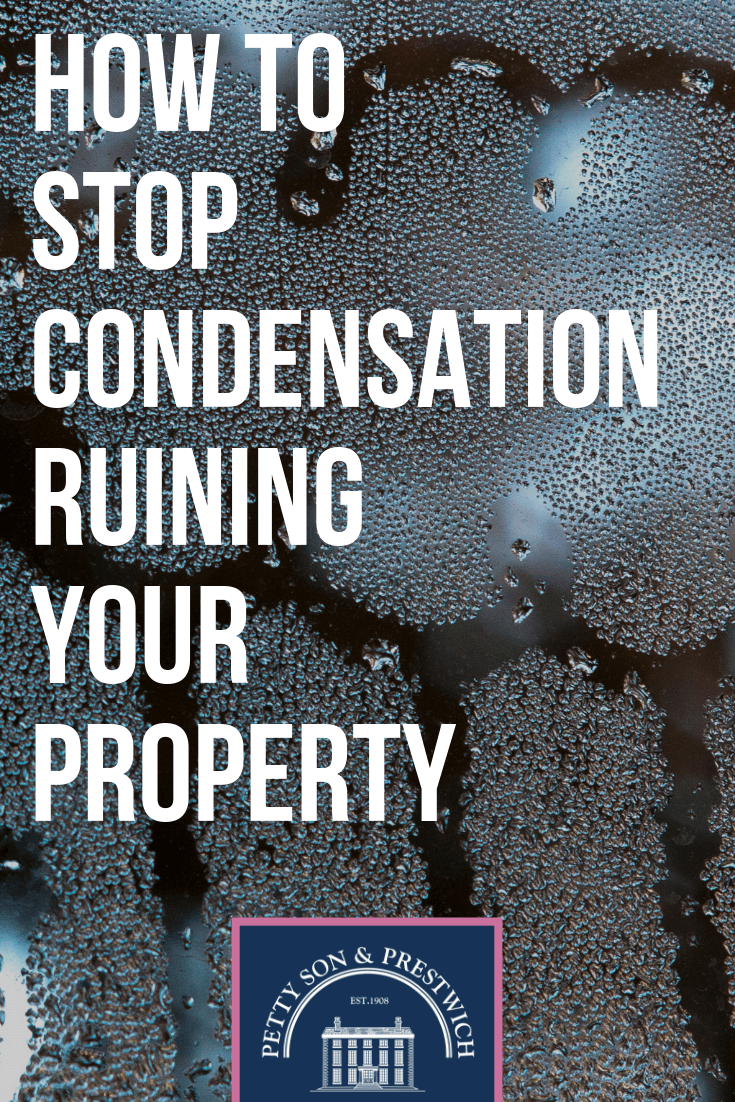How to stop condensation may not necessarily be on the mind of property owners after such a beautiful summer but, with winter fast approaching, it’s time to talk wet windows and damp walls.
Unfortunately, any property can be affected by condensation if proper precautions and preventative measures aren’t taken. Damage can often be significant and there are health implications, too, should the moisture turn to mould.
There is, however, good news: preventing condensation isn’t difficult...providing you follow the correct procedures to combat it. Before we get into how to stop condensation, though, let’s take a look at what it is and how it can affect your home and your health.
What is condensation?
Condensation is where matter changes from gas into liquid and it can occur when warm air hits cooler air or when that warm air comes into contact with surfaces cold enough to cause the reaction. This is because warm air holds a greater volume of moisture than cold air, so when it comes into contact with colder surfaces it has to release some of that moisture, causing condensation to occur.
The colder surfaces in question can be anything from walls to windows or shoes to storage units, and a buildup of moisture can result in a wholly unpleasant living environment for you or your tenants. Condensation is probably the leading cause of damp in UK homes, but many homeowners are unaware that they are contributing to the problem simply by living their lives.
What damage can condensation cause

Apart from being a major inconvenience (daily wiping down of windows, anyone?), condensation can cause serious damage to your property. Left to its own devices, a condensation problem will often lead to mould growth in the home and can even penetrate walls and get into cavities, which can actually cause structural damage over time. Even if things don’t get as bad as that, other costly issues such as peeling paintwork and bubbling wallpaper can all be attributed to poorly managed moisture levels.
Condensation can also damage personal belongings and furniture, too, should you not address the problem before it’s too late. Mould can grow on almost anything, and once it’s taken hold it can be terribly difficult to remove entirely. Musty smells will often remain long after visible signs of the problem have been taken care of, leaving you with little option but to throw away the offending article and start again.
Can condensation affect your health?

Condensation itself may not cause many health issues, but the mould it creates can wreak havoc with our respiratory systems.
If homeowners or tenants generate high-humidity living conditions, condensation will occur. This in turn can end up transforming into mould if left unattended.
Why condensation gets left

One key problem with condensation is that it is often mislabelled. Although it is indeed a form of damp, to give it that label automatically disassociates the tenant or homeowner from the issue and can lead to the condensation worsening, as the causes of things such as rising or penetrating damp are commonly deemed to be out of our immediate control.
The truth is, however, that most ‘damp’ problems are actually condensation problems, and we’re the ones causing it to happen! Day-to-day living can introduce as much as 10 litres of excess moisture into our homes on a daily basis, and it’s all got to go somewhere.
During the winter months, not only are we keeping doors and windows closed to keep things snug, we’re also spending longer periods indoors, cooking more, and often drying clothes inside, too. All of which leads to, you guessed it, more moisture in our homes.
Here are some signs of condensation to look out for:
- Wet windows (usually forming at the sides and bottom of each pane, but can cover the whole window in extreme cases)
- Wet walls (similarly, the moisture will initially take hold at a lower level where the wall is coldest)
- Damp patches on walls (can occur on ‘cold spots’, especially on external walls)
- Light brown, oily looking spots on walls
- Paint discolouration
- Peeling wallpaper
- Mould growth (very common in high humidity areas, especially bathrooms)
- Mustiness in the air, on clothes, furniture, carpets, etc.
How to stop condensation

Now that we’ve examined what condensation is and how it can affect your health and property, it’s time to look at how you can prevent it. As we’ve already touched on, condensation is caused by excess moisture in the air, so bringing this under control is our primary aim.
As moisture is created by so many daily activities - think cooking, washing, and even breathing - this can seem like an impossible task, but it is doable. You do, however, need to be consistent and keep your anti-condensation routine going at all times during the colder months.
Wipe down windows
As your windows will likely be your first indication of condensation, this is a good place to start. Although this cannot be regarded as a preventative measure per se, it will help remove some of the moisture from the room and, more importantly, help prevent mould growth from occuring.
This is a job that needs to be done every day, first thing in the morning. Use a piece of kitchen towel or absorbent cloth to gently wipe away the liquid that has formed on your panes and ensure they are dry.
If you see mould, use a hot soapy cloth to wash the offending area with and dispose of it straight away, then you can dry the window with a separate cloth or towel. Do not brush the area, as this could help distribute mould spores around your home.
Ventilate
While many newer windows will have ‘trickle vents’ installed, the vast majority of older properties will need to be ventilated manually in order to keep condensation at bay. This doesn’t, however, mean that you need to leave your windows open 24/7, nor does it have to result in your energy usage going through the roof, either.
All that’s needed for most households is a quick 15 minute airing, again this can be done in the morning when you are wiping down your windows and your heating is getting going for the day. Opening up your property to the outside world will allow any overnight buildup of moisture to escape and, as your home warms up, the relative humidity of the air inside will naturally begin to decrease.
Ventilation is also important when cooking or drying clothes, so try and let that moist air out whenever you can. Don’t forget to put a lid on those boiling pots, too!
Should this not be enough to cope with your condensation issues, there are other things you can try, such as installing more vents or air bricks. Dehumidifiers also work extremely well, and we’ll speak about these more in a moment.
Maintain a constant temperature
Setting your thermostat to a low, even temperature will help prevent cold spots from occuring in the home, which will lessen the chances of condensation taking hold. Make sure you keep that heat going throughout the day, even when you’re not at home, as this will also help keep condensation at bay.
Check out your insulation
Proper insulation can make a big difference to the levels of condensation your property will experience, especially if your home has cavity walls. Loft insulation and double glazing will also help you maintain an even temperature throughout your property, too.
Place your furniture wisely
Make sure you keep all big bits of furniture - chest of drawers, wardrobes, sofas, cabinets, etc. - slightly away from your walls to allow some air to circulate behind them, around 5cm should be enough.
Another good idea is to keep such furniture away from external walls altogether if you can, as these will naturally be colder than internal walls, thus creating more opportunity for condensation to arise.
Dehumidify
With excess moisture in the air being the key component to condensation, it makes sense to remove as much of it as we possibly can and a dehumidifier can be a great help with this. These natty little machines take in moist air and push our dryer, warmer air whilst holding the excess moisture in a chamber for disposal later on.
Not only are they great for when your property is going to be left empty for a while, they’re also brilliant for quickly removing moisture after cooking, showering, and other high humidity tasks. They can also dry clothes superbly well when placed in a small room and left to do their thing.
That’s it! If you know someone with a condensation problem (or if you’re a landlord and want to make your tenant aware of how important it is to prevent it happening), please feel free to share this article with them. If you need any other property advice, give us a call. We’re always happy to help.


As Petty’s MD, John steers the ship. He is, however, first to admit that the team around him run the show, and he’s incredibly proud of each and every one of them. Sporty and studious, caring and loyal, John is a father of two wonderful children (and Cooper the dog).
020 3370 8784 / Email Directly